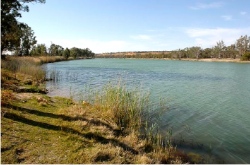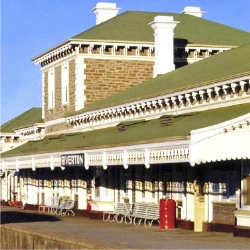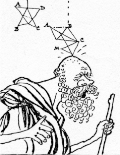We love the late Frank McMahon’s poems, which profoundly reflect places, people and times remembered – especially from South Australia. Recently, members of his family have made many of his much-loved works -- both previously published and unpublished -- accessible on the Web. It’s a treasure:
Below, with their permission, we reproduce two of our favourites.
Frank McMahon was born in Loxton, on the River Murray in South Australia, in 1926. He died on 4 October 2010, in Canberra, aged 83.
Frank’s childhood was spent in many places throughout South Australia since his father was a foreman of a Postmaster-General’s Department telephone line team. He enlisted with the Royal Australian Air Force during World War II and continued to serve after the war. He then joined the Commonwealth Public Service and studied at the University of Adelaide. After graduating in 1962 he moved with the federal Department of Treasury to Canberra. He lived in the Canberra suburb of Ainslie, and wrote wonderful poems, especially about South Australia.
Frank’s work was published widely in newspapers and journals, and he self-published two collections: Tide Pools and The Asphalt and the Stars. He won several Australian awards for poetry, including The Bronze Swagman. He wrote commissioned works for the Australian War Memorial, including an inscription on a granite slab at Australia’s Parliament House and a haiku used in the War Memorial's exhibits.
In Frank’s death notice in The Canberra Times, on 6 October 2010, was this gentle piece he had written, which was particularly evocative for those of us who knew Frank and share his love of the River Murray.
Homegoing
I've asked them -- when I take my last

urned journey home, to stop below the cliffs --
to check the wind -- then gently tip me in.
With luck, I'll drift on down
behind the island past
the bottom landing round
the western bend
and on towards Lock Three.
I couldn't do it now
of course, it's far too far.
But I'll be lighter then.
----------------------------------
Also highly evocative is his word-picture of the grand refreshment rooms of the former railway station at Riverton, in the mid-north of South Australia:
Riverton
(Change for Clare and Spalding Lines)
Summer 1938

I’ll wait inside --
it’s cooler here behind the grating
flip-flap of the half-wire doors and in between
the glass and varnish. Here, where flaking
cakes dry quietly and desiccating
lamingtons moult coconut, near tea-steam,
towel-shrouded china glistens
thick-lipped and S.A.R.-ed. And waiting
near the swing-door-interrupted kitchen-sounds
and Victor Harbour views I’ll listen
to the rings of beads around
the milk jug covers tinkle, thinly. Now
it’s almost time
in Latin where a pendulum is swinging
like a shunter’s lantern. Signalled seconds veil
themselves and re-emerge through vapour ringing
port-holed kitchen doors and murmuring urns.
The bubbling begins. The room exhales
Bushells, pasties and the warm brown
Acorn smell of floors. I’ll wait where air turns
slowly clockwise as the fan blades spin
the steam thin. Any moment now
the Ten-eight Up will bring
the mail-bags, churns and morning gourmets in.
-------------------------------------------
Riverton railway station was famed not only for its refreshment rooms. In an affray in 1921 at the station, the Member for Sturt (Broken Hill) in the New South Wales Parliament, Percival Brookfield, was shot by a deranged gunman and died later that day; others were wounded.
